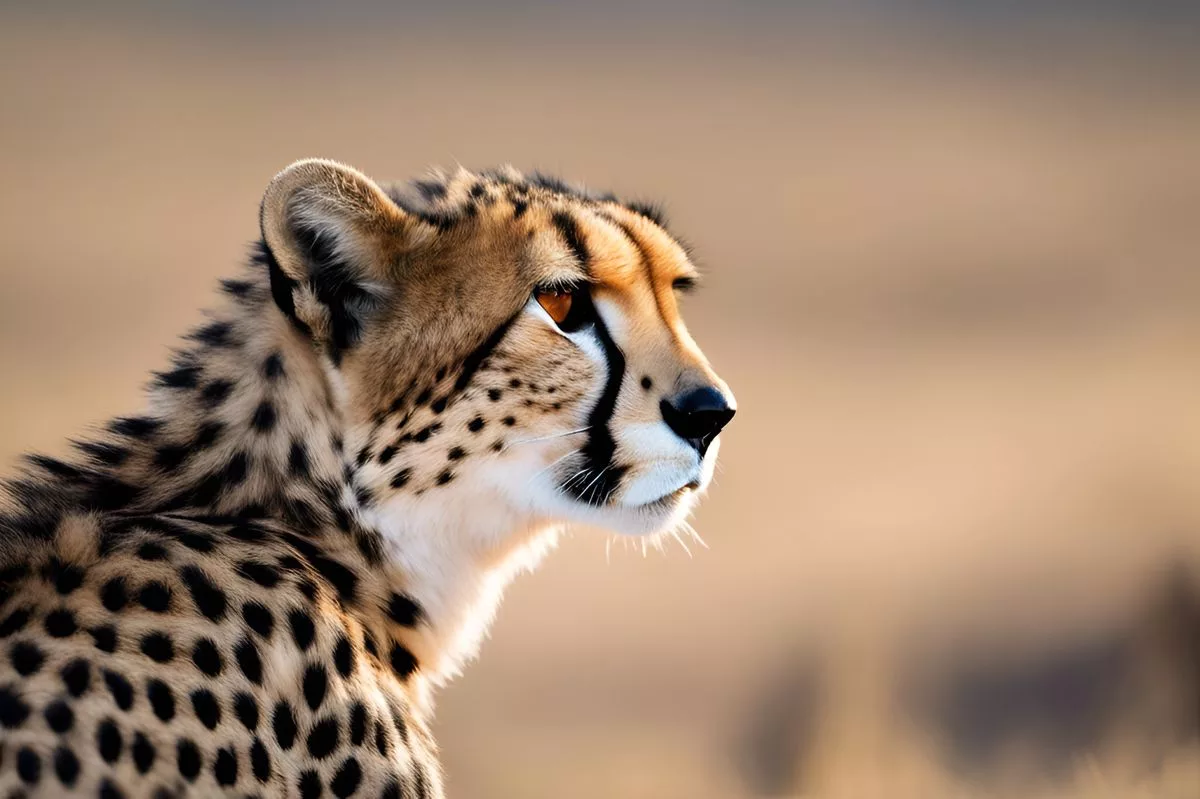Sanbona Wildlife Reserve is a massive nature reserve in South Africa that covers 54,000 hectares of preserved ecosystems. It was born from a vision to protect endangered landscapes and create job opportunities in a poor region. Guests can stay in three luxury lodges and enjoy nature drives and walking safaris, as well as stargazing and rock art. Sanbona is a stunning example of conservation and is a must-visit for nature lovers.
What is Sanbona Wildlife Reserve?
Sanbona Wildlife Reserve is one of the largest privately-owned nature reserves in South Africa, covering 54,000 hectares of exquisitely preserved ecosystems. The reserve’s conservation model focuses on initiatives that foster resilient ecosystems, landscapes, and communities. Guests can choose from three luxury lodges and enjoy enthralling nature drives, walking safaris, rock art, and stargazing. Sanbona is an immersive journey into a diverse and meticulously conserved corner of South Africa.
In 2002, a large portion of farmland spanning 500 square kilometers, situated along the globally recognized Route 62 in Little Karoo, was earmarked to be transformed into a sanctuary. The aim was to protect the unique ecosystems, landscapes, and heritage it housed, simultaneously creating job opportunities in one of South Africa’s poorest regions. This grand vision was lofty, if not audacious. However, present day observations reveal the stunning realization of this aspiration – the Sanbona Wildlife Reserve.
Spread over a mind-boggling 54,000 hectares, Sanbona has now established itself as one of the largest privately-owned nature reserves in South Africa. It spans across miles of exquisitely preserved ecosystems, located within two of the world’s most acclaimed biodiversity hotspots. The reserve’s conservation model, refined over time, focuses on initiatives that foster resilient ecosystems, landscapes, and communities.
Sanbona serves as a powerful exemplification of the potential within vision and conservation. With an unwavering commitment to the survival and prosperity of critically significant ecosystems, endangered wildlife, and flora, Sanbona is actively working towards securing a flourishing natural habitat for the generations to come. The commitment to conservation goes beyond mere preservation, influencing the experiences of all who visit.
A Living, Breathing Testimony to Conservation
Situated a mere 3.5-hour drive from Cape Town, Sanbona covers 62,000 hectares of the expansive Karoo sky country. Here, amidst the breathtaking panorama, time appears to stand still, and nature assumes the spotlight. Sanbona’s evolution into a non-profit organization has empowered it to fully embody its philosophy of long-term protection and conservation. It has been transformed into a thriving wilderness area.
In the present day, Sanbona is revered as a beacon of private conservation in the Western Cape province. It resonates with those who have a penchant for travel, wildlife, and a desire to gain a deeper understanding of their local environment. It goes beyond a simple ‘safari sojourn’; it is an enlightening excursion into a dry terrain teeming with endemic flora and a variety of wildlife, from the majestic elephants and cheetahs to the diminutive brown hyena, steenbok, and klipspringer.
Accommodation and Activities at Sanbona Wildlife Reserve
At Sanbona, guests are offered the choice of three luxury lodges, each with its own unique allure and charm. The Dwyka Tented Lodge, nestled under the nesting Verreaux’s eagles and along a river bend, radiates luxury. The Tilney Manor, with its classic Cape Georgian style, provides an exclusive Karoo experience. For families, the Gondwana Family Lodge with its customized ‘Kids on Safari’ programme aims to ignite the passion for conservation in the eco-warriors of tomorrow.
Enthralling nature drives, walking safaris, rock art, and stargazing form part of the captivating safari option in close proximity to Cape Town. For those yearning to partake in this unforgettable experience, further details and booking options can be found at Sanbona.com. A visit to Sanbona Wildlife Reserve is more than a safari getaway. It’s an immersive journey into a diverse and meticulously conserved corner of South Africa. Entering Sanbona is stepping into a world where nature is paramount, the past is cherished, and the future is zealously cultivated.
Sanbona Wildlife Reserve is an embodiment of the power of a vision to transform an arid landscape into a thriving sanctuary for a variety of flora and fauna. It stands as a testament to the potential within conservation efforts, not just in preserving the present, but in securing the future. Its commitment to conservation is so deeply rooted that it shapes the experiences of all those who visit. From its stunning accommodation options to its immersive wildlife experiences, Sanbona Wildlife Reserve is truly a not-to-be-missed jewel in the heart of South Africa.
How big is Sanbona Wildlife Reserve?
Sanbona Wildlife Reserve covers 54,000 hectares of exquisitely preserved ecosystems, making it one of the largest privately-owned nature reserves in South Africa.
What was the objective behind the creation of Sanbona Wildlife Reserve?
The objective behind the creation of Sanbona Wildlife Reserve was to protect endangered landscapes and create job opportunities in a poor region.
What activities can guests enjoy at Sanbona Wildlife Reserve?
Guests at Sanbona Wildlife Reserve can enjoy nature drives, walking safaris, rock art, and stargazing. They can also choose from three luxury lodges for their stay.
Where is Sanbona Wildlife Reserve located?
Sanbona Wildlife Reserve is located in South Africa, just a 3.5-hour drive from Cape Town. It covers 62,000 hectares of the expansive Karoo sky country.
What is the conservation model of Sanbona Wildlife Reserve?
The conservation model of Sanbona Wildlife Reserve focuses on initiatives that foster resilient ecosystems, landscapes, and communities, with the aim of securing a flourishing natural habitat for the generations to come.
What makes Sanbona Wildlife Reserve a must-visit for nature lovers?
Sanbona Wildlife Reserve is a stunning example of conservation and offers an immersive journey into a diverse and meticulously conserved corner of South Africa. Its commitment to conservation is deeply rooted and shapes the experiences of all those who visit.












